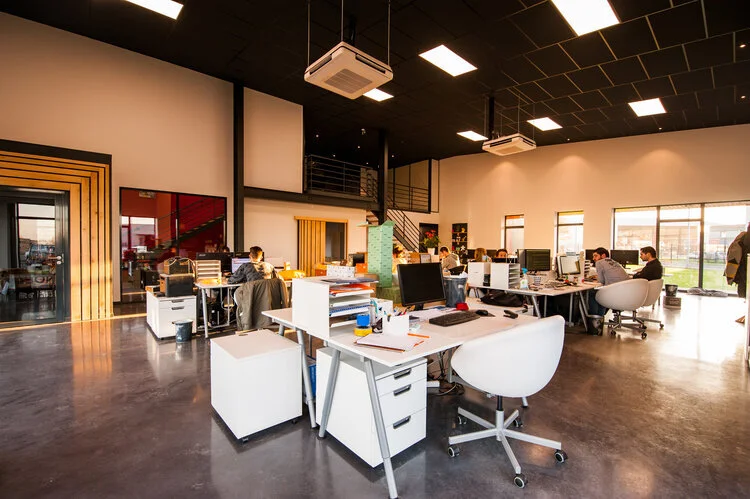How Office Design Affects Productivity
we shape our buildings; thereafter they shape us - Winston Churchill
Cubicle farm, open office, personal offices: your office layout can say a lot about who you are as a company, but it can also have a profound impact on the morale and productivity of your employees. So, how can conscious design choices increase your employees’ productivity and overall work satisfaction?
First, let’s take a look at what type of work is being done in your office. Are your employees doing deep work such as coding, editing, or research? Or are they tackling creative endeavors that require collaboration? Once you understand what type of work is being done, and how frequently, you can start to examine how much of each type of space is required for your particular office.
A formal study of your organization may help in determining the breakdown of what your organization requires, but oftentimes a discussion with your employees can reveal much of what you’re lacking. Many times your employees know their own pain points and discussions about those can help illuminate where your office design can improve.
No matter where your current design may be, or where you think you need to go, one thing is clear, no one style works for all employees and all types of work. In order to maximize the productivity of your staff, and your space, you need to design the correct ratio of “caves and commons” - dedicated quiet spaces and collaborative spaces.
Let’s take a look at the four main types of space that comprise office design:
Focus - For work that requires uninterrupted concentration for prolonged periods of time. These spaces need to be free from the noise of open office and signal to co-workers that the work being done is not to be disturbed, if at all possible. Designing small spaces, such as individual offices with doors or cubicles/nooks outfitted with sound absorbing materials, in an area of the office dedicated to this type of work allows employees the necessary time to concentrate on deep work. Recent studies have found that employees who work in completely open office spaces spend upwards of 40% of their day either dealing with an interruption or attempting to get back to where they were before the interruption. Providing dedicated space for this type of focus work can have an immediate increase in both employee happiness and productivity.
Collaboration - Creating spaces for impromptu meetings like common areas, dining areas, and soft seating can help increase collaboration between teams and colleagues. A dedicated space for cooperative work can also aid in reducing distraction for other employees, helping those that need to work together to feel empowered to do so and do so efficiently.
Ideation - Libraries, labs and other formal and informal learning spaces, allowing employees to hone skills or learn new ones. Employees who are engaged in gaining new skill sets and sharing their skills with others will be encouraged to find innovative ways to improve not only themselves but also the company.
Socialization - Flexible seating areas in a designated lounge can help combat burnout and increase cross team collaboration.
The right combination of spaces can help employees feel empowered to do the work they need to do and provide your company with higher quality results. Offering employees “free addressing” offices, where they don’t have assigned workspaces, but can instead choose the correct space for the type of work the day or part of the day requires is a great way to provide employees with the autonomy to meet their own needs. Just be sure to continue to provide each employee a space to stash their stuff; any valuables they may have, paper that might still be required in your industry, and a sense of ownership can be a huge bonus for most employees.
Regardless of the breakdown of the type of space required for your particular office there are a few universal principles that can aid in productivity and morale in nearly any office. High quality lighting can reduce eye strain, headache, and new research shows it can actually boost memory and our increase our ability to learn. A recent survey of 1,614 workers found employees prefer natural light and views over any other office perks. While a recent research study found optimization of natural light in an office significantly improves health and wellness among workers. In fact, this research revealed that workers in daylight office environments reported a 51% drop in the incidence of eyestrain, a 63% drop in the incidence of headaches and a 56% reduction in drowsiness., All of which can demonstratively lead to increased productivity. And while we’re making simple changes to the office, the addition of indoor plants to current “lean” designs reduces stress and increases concentration to the tune of up to 15% greater productivity.
Meeting the design needs of your employees and your business means not falling victim to design trends of rows of cubicles or the completely open concept offices; it means thoroughly understanding the work that needs to be accomplished and providing the environmental tools to your employees to set and reach those goals.


